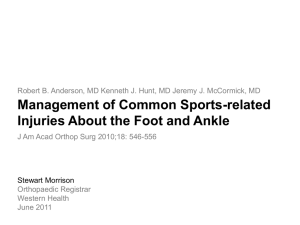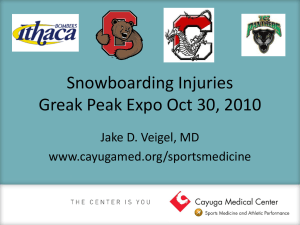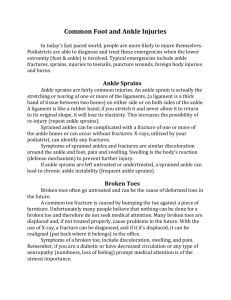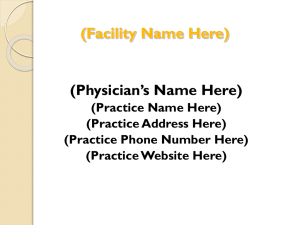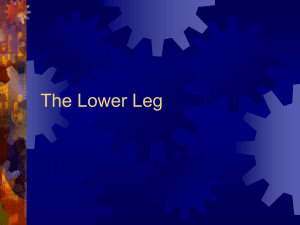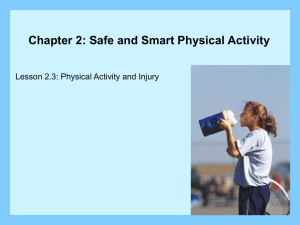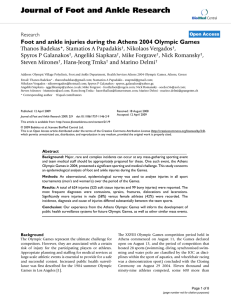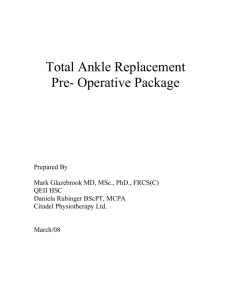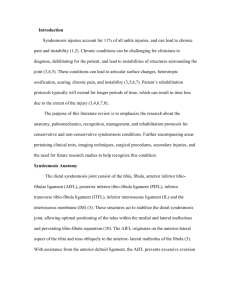Common Injuries / How To Prevent
advertisement
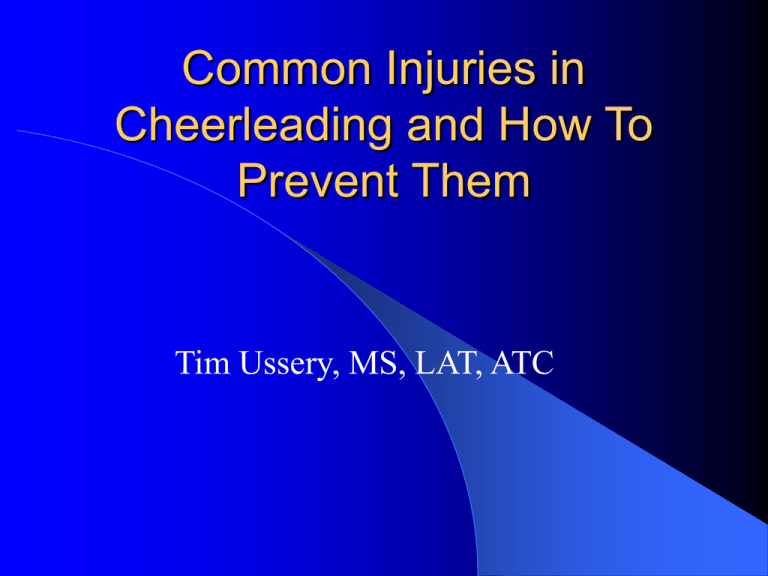
Common Injuries in Cheerleading and How To Prevent Them Tim Ussery, MS, LAT, ATC Common Injuries Head Injuries Ankle and Foot Injuries Wrist and Hand Injuries Grade 1 Concussions Symptoms: – Transient Confusion – No Loss of Consciousness – No Headaches – No Neurological Symptoms – Symptoms Resolve in Less Than 15 Minutes Grade 1 Concussions Management: – Remove from Contest – Examine Immediately and at 5-Minute Intervals – May Return if PostConcussive Symptoms Resolve Within 15 Minutes Grade 2 Concussion Symptoms: – Transient Confusion – Amnesia – No Loss of Consciousness – Mild Headache – Light-Headed – Unable to Concentrate or Focus – Symptoms do Not Resolve in Less Than 15 Minutes Grade 2 Concussion Management: – Remove From Contest and Disallow Return for That Day – Examine Frequently for Signs of IntraCranial Pathology – Physician Management Grade 3 Concussion Symptoms: – Any Loss of Consciousness. Brief (Seconds). Prolonged (Minutes). – Severe Neurological Symptoms – Beware of Second Impact Syndrome. Grade 3 Concussions Management: – Transport to the Nearest Emergency Room by Ambulance if Unconscious or if Worrisome Signs are Detected. – Use Backboard and Send to Emergency Room. Head Injury Take Home Instructions Observe for 24-48 Hours Symptoms to Be Observed. Management: – Head Injury Take Home Instructions Symptoms of Concussions Severe headaches Dizziness or loss of coordination Temporary loss of memory/mental confusion/disorientation Ringing of the ears Blurred or double vision PEARL Nausea and/or vomiting Slurred speech Convulsions or tremors Excessive sleepiness or grogginess Clear fluid from the nose and/or ears Decreased pulse rate Gradual increase in blood pressure Numbness or paralysis (partial or complete) Difficulty being aroused Ankle Injuries Types – Sprains – Fractures Ankle Sprains Most Common is Inversion or Inward Stress Least Common is Eversion or Outward Stress Can be Traumatic or a Chronic, Reoccurring Injury Ankle Sprains Signs and Symptoms – Mild Aching to Sudden – – – – Pain Swelling Discoloration Inability to Move the Ankle Properly Pain in the Ankle Even When You are Not Putting Weight on It Ankle Sprains Treatment – Non-Surgical Rest Control Inflammation Manual Therapy Modalities Rehabilitation – Surgical In Recurrent Situations Ankle and Foot Fractures Mechanism – Contact Getting Stepped on the Foot or Ankle Jumping or Landing Improperly Sudden Twisting or Pivoting Where Ankle Gives Out Ankle and Foot Fractures Signs and Symptoms – Mild to Sharp Pain – Mild to Moderate Swelling – Discoloration and Bruising – Inability to Move the Ankle, Foot, and/or Toes Properly, Depending on Severity – Point Tender Over the Injured Area Ankle and Foot Fractures Treatment – Non-Surgical Brace or Cast 4-6 Weeks of Immobilization Control Inflammation Modalities Rehabilitation – Surgical Depending on Severity Depending on Bone Displacement with Fractures Hand and Wrist Injuries Types – Sprains – Fractures – Dislocations – Tendon Injuries Hand and Wrist Injuries Mechanism: – Contact Getting Hit Directly on the Hand and Wrist Catching Someone with Hand and Wrist in an Awkward Position Falling and Landing with the Hand and Wrist in an Awkward Position Improper Form During a Cartwheel, Handstand, or Flip Hand and Wrist Injuries Signs and Symptoms – Mild to Sharp Pain – Mild to Moderate Swelling – Discoloration and Bruising – Inability to Move the Hand, Wrist, and/or Fingers Properly, Depending on Severity – Point Tender Over the Injured Area Hand and Wrist Injuries Treatment – Non-Surgical Brace or Cast Rest Control Inflammation Modalities Rehabilitation – Surgical Depending on Severity Depending on Bone Displacement with Fractures When to Seek Medical Attention for a Traumatic Injury Swelling About a Joint Inability to Move a Joint Decreased Joint Motion Obvious Deformity Inability to Walk or Bear Weight on a Joint Treatment of Traumatic Injuries Treat the Inflammatory Process – Protection – Rest – Ice – Compression – Elevation Seek Medical Help if Necessary Return to Competition Following a Traumatic Injury Pain Free Normal Range of Motion Normal Strength Able to Run Able to Jump and Pivot Able to Perform Sport Specific Activities Preventing Injuries in Cheerleading Utilize Proper Training Techniques Improve Strength Correct Muscular Imbalances Improve Flexibility Proper Training Techniques Begin Slowly Progress Gradually The #1 Cause of Injury is Doing Too Much, Too Soon The Tissues of the Body can Adapt if Change is Gradual Rules of Strengthening Light Resistance High Repetition Emphasis on Endurance and Balance Emphasis Should be on the Shoulder Girdle, Trunk, Core, and the Stabilizers of the Knee and Ankle Thank You!
